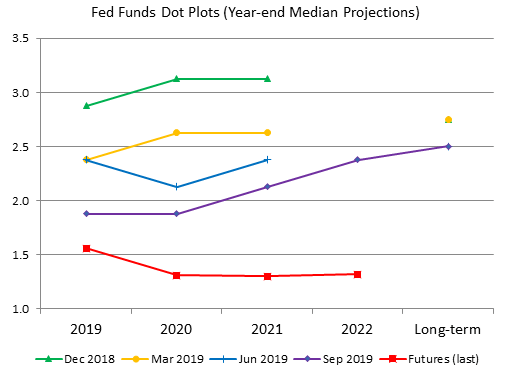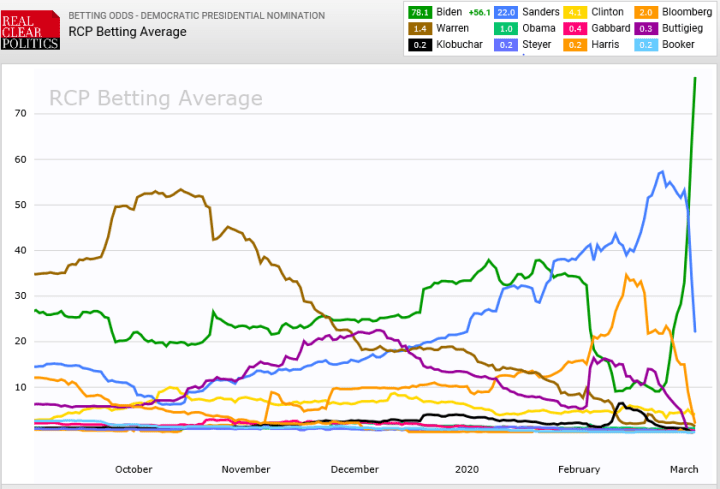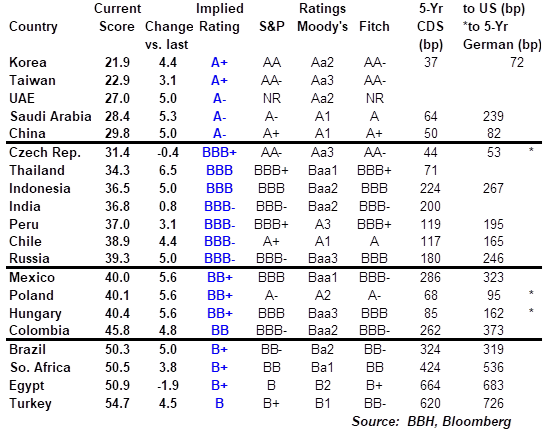The FOMC meets Wednesday; first look at Q1 US GDP comes out Wednesday; weekly jobless claims Thursday are expected at 3.5 mln vs. 4.427 mln last week Italy dodged a bullet last Friday; ECB meets Thursday; eurozone reports Q1 GDP and April CPI data ahead of the ECB decision; Sweden’s Riksbank meets Tuesday BOJ meets Monday; Japan has a busy data week after the BOJ meeting The dollar continues to edge higher. On Friday, DXY traded at the highest level since April 6 before surrendering some of those gains. It is likely to test the April 6 high near 100.931 but a break above the 101.188 area is needed to set up a test of the March 20 cycle high near 103. The euro traded Friday the lowest level since March 24 but has recovered back above the .08 area. Sterling
Topics:
Win Thin considers the following as important: 5) Global Macro, 5.) Brown Brothers Harriman, Articles, developed markets, Featured, newsletter
This could be interesting, too:
RIA Team writes The Importance of Emergency Funds in Retirement Planning
Nachrichten Ticker - www.finanzen.ch writes Gesetzesvorschlag in Arizona: Wird Bitcoin bald zur Staatsreserve?
Nachrichten Ticker - www.finanzen.ch writes So bewegen sich Bitcoin & Co. heute
Nachrichten Ticker - www.finanzen.ch writes Aktueller Marktbericht zu Bitcoin & Co.
- The FOMC meets Wednesday; first look at Q1 US GDP comes out Wednesday; weekly jobless claims Thursday are expected at 3.5 mln vs. 4.427 mln last week
- Italy dodged a bullet last Friday; ECB meets Thursday; eurozone reports Q1 GDP and April CPI data ahead of the ECB decision; Sweden’s Riksbank meets Tuesday
- BOJ meets Monday; Japan has a busy data week after the BOJ meeting
The dollar continues to edge higher. On Friday, DXY traded at the highest level since April 6 before surrendering some of those gains. It is likely to test the April 6 high near 100.931 but a break above the 101.188 area is needed to set up a test of the March 20 cycle high near 103. The euro traded Friday the lowest level since March 24 but has recovered back above the $1.08 area. Sterling remains stuck near the $1.2350 area. Lastly, USD/JPY remains stuck in a narrow range between 107.50 and 108. We remain constructive on the dollar.
The FOMC meets Wednesday. After the recent flurry of both monetary and fiscal stimulus in the US, we suspect the Fed will now take a wait and see approach. Its efforts to “normalize” market segments that came under stress appear to be working. Fiscal stimulus is in the pipeline. The Fed should be in no hurry to move again and should be content to see how things unfold. Indeed, the Fed simply is not constrained by the meeting calendar any more. If problems arise between meetings, it will not hesitate to act as needed.
Weekly jobless claims Thursday are expected at 3.5 mln vs. 4.427 mln last week. If so, this would mean that over 30 mln have become jobless over the last six weeks, which is close to 20% of the labor force. Unemployment was 3.5% in February, just before the crisis. If we add these together, the US is likely already nearing 25% unemployment after just a month and a half. May is unlikely to bring any relief.
The regional Fed manufacturing surveys for April will continue to roll out this week. Dallas Fed reports Monday and is expected at -75 vs. -70 in March. This will be followed by the Richmond Fed Tuesday, which is expected at -40 vs. +2 in March. So far, Kansas City Fed came in at -30 vs. -34 expected and -17 in March, the Empire survey came in at -78.2 vs. -35.0 expected and -21.5 in March, and the Philly Fed survey came in at -56.6 vs. -32.0 expected and -12.7 in March.
ISM reports its April manufacturing PMI Friday and is expected at 36.1 vs. 49.1 in March. Final Markit manufacturing will also be reported that day, and is likely to drop a couple ticks from the preliminary 36.9. Ahead of that, Chicago PMI will be reported Thursday and is expected at 38.2 vs. 47.8 in March.
The first look at Q1 US GDP comes out Wednesday. While it is old news, it will give markets a taste of what’s to come in Q2. Consensus sees a contraction of -3.9% SAAR. Looking ahead, the New York Fed’s Nowcast model is currently estimating Q2 growth at -7.8% SAAR. Furthermore, the New York Fed recently unveiled its Weekly Economic Index (WEI) to better capture the current state of the economy by using high frequency data. For the week ending April 18, WEI suggests the economy is contracting -11.7%.
There are many other US data reports this week. These include April Conference Board consumer confidence (87.9 expected), March advance goods trade (-$55 bln expected), and wholesale and retail inventories Tuesday. March pending home sales (-13% m/m expected) will be reported Wednesday, followed by personal income and spending and Q1 employment cost index Thursday. Friday sees March construction spending and April auto sales.
EUROPE/MIDDLE EAST/AFRICA
Italy dodged a bullet last Friday. S&P affirmed its BBB rating but maintained its negative outlook. The agency noted that “The ECB’s current financing backstop enables Italy to refinance its debt at real interest rates of around 0%. In nominal terms, and absent a significant deterioration in borrowing costs, Italy will pay less to service its total debt stock this year and into 2021-2023, than it paid in 2019.” Moody’s has scheduled a review for Italy’s Baa3 rating May 8. Picking the timing is always a guessing game but we believe Italy will eventually lose its investment grade rating. The latest update of our sovereign ratings model shows Italy slipping into BB+ territory.
The ECB meets Thursday. The situation has deteriorated sharply since its last meeting March 12. As such, we expect the ECB to expand its QE program, perhaps by including sub-investment grade bonds as it just did to its repo operations. However, the new QE is barely a month old and so there is a risk that the ECB waits until its next meeting June 4 to expand its asset purchases. That said, why wait?
Eurozone reports Q1 GDP and April CPI data ahead of the ECB decision Thursday. GDP is expected to contract -3.3% y/y (3.5% q/q), while headline inflation is expected to ease sharply to 0.1% y/y from 0.7% in March. Before that, Germany reports April CPI Wednesday, with headline inflation expected to halve to 0.7% y/y from 1.4% in March. Germany then reports March retail sales and unemployment Thursday. Sales are expected to fall -8.0% m/m, while unemployment is expected to rise 77k.
Sweden’s Riksbank meets Tuesday. March trade and retail sales will also be reported that day. Since the bank was able to finally end negative rates, we think that it will be very reluctant to go that route again. Rather, further easing is likely to come in the form of increased asset purchases. Yet only a fifth of the existing QE program has been carried out so far and so the bank will not be in any rush to expand it just yet. However, we suspect it will give some dovish forward guidance and perhaps highlight a potential expansion in H2.
ASIA
The Bank of Japan meets Monday. Data have come in very weak ahead this meeting. Press reports suggest the BOJ will discuss unlimited bond buying. At first blush, this seems very dovish but limits on bond buying don’t make any sense under a policy of strict yield curve control (YCC). BOJ has to buy as much debt as needed to keep yields where they are. With Japan (and everyone else) issuing more and more debt to fund the virus programs, the BOJ will have to absorb more and more too. We believe the BOJ may follow the Fed and the ECB in providing more support for the corporate sector.
Japan has a busy data week after the BOJ meeting. March jobs data will be reported Tuesday, with unemployment expected to rise a tick to 2.5%. Retail sales and IP will be reported Thursday and are expected to fall -4.3% m/m and -5.0% m/m, respectively. April Tokyo CPI will be reported Friday, with headline inflation expected to fall to 0.1% y/y and ex-fresh food to 0.5% y/y. The economy was already struggling before the coronavirus hit and things have only gotten worse.
Tags: Articles,developed markets,Featured,newsletter






